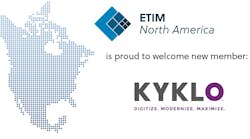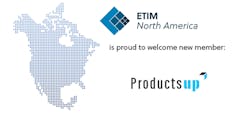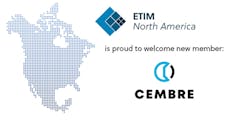Last year's launch of the IDW2 central data repository of standardized supplier product and pricing data by the Industry Data Exchange Association (IDEA), Rosslyn, Va., has garnered greater industry adoption than its predecessor. More than twice as many electrical distributors are currently using or upgrading to IDW2 from IDW, and the manufacturers on board with IDW2 represent more than 80 percent of the products electrical distributors sell. Still, many electrical distributors and manufacturers using IDW2 are not harnessing its full potential.
IDW2 enables manufacturers to improve the profitability of their line for their distributors by helping them increase gross profit and enhance the quality of their product data to reduce transactional errors.
IDEA provides a common language for e-business and a medium for transmission of electronic business documents. These objectives are accomplished through its centralized industry product database, the Industry Data Warehouse (IDW2), standardization of electronic document formats, and a low-cost reliable network for the exchange of e-business documents: the Industry Data Exchange (IDX2).
Synchronizing price and product data represents the greatest opportunity for the electrical channel to become more cost-efficient. Companies that embrace this opportunity can reduce error rates, enhance customer service and improve profitability.
Manufacturers who actively track and promote product and price synchronization can:
-
Quantifiably improve the profitability of their line with their distributors through operational efficiencies.
-
Reduce customer service overhead, enabling personnel to be reassigned to more productive activities.
-
Increase their throughput, generating incremental profits while maintaining overhead.
-
Reallocate their sales organization's time from nonprofitable issues (fixing problems) to profitable endeavors (calling on customers).
-
And most importantly, gain a competitive advantage by being the easiest and most efficient supplier to do business with.
Some manufacturers get positively passionate about eliminating these problems and have taken strong, intelligent action. Schneider Electric has created a subsidy for distributors to join IDEA and use the IDW2. The manufacturer also pays a rebate for distributors to use EDI or the Web for ordering. Additionally, Schneider Electric doesn't give product and pricing data to third-party database companies.
Eaton Electrical has also put money up to subsidize distributor IDEA membership and usage of the IDW2, and Rockwell Automation's new policy is to make product data available only through the IDW2.
Each of these three giants makes data available only through the IDW because they want to eliminate as many transaction problems as possible.
For a company to capture the benefits of IDEA, manufacturers' marketing people need to become more knowledgeable and become involved. Marketers need to express the customer benefits that can emanate through data/price synchronization and show how the IDW2 can generate incremental profits and revenues with targeted customers. To achieve this, marketers need to promote their company's ability to provide price and data synchronization through IDEA.
Some leading distributors are beginning to look toward IDEA to provide attributed data to populate online and print/electronic catalogs. For a manufacturer to be accurately portrayed by a distributor, the manufacturer needs to populate its attributed data into the IDW2.
For these reasons, manufacturers' marketers need to become more involved in communicating customer needs and collaborating with their IT departments to identify opportunities to further leverage their IDEA investment.
Why is Price and Data Synchronization so Important?
If two data points are the same, there will not be errors when comparing the data. If these data points are communicated electronically, the data is correct and communicated on a timely basis.
This is one of the major reasons that retail environments are viewed as more profitable than distribution — the transactional ease of doing business.
Utilization of the IDW2 would significantly reduce errors and make manufacturer/distributor relationships more profitable. Usage of the IDX2 further enhances the profitability equation.
Anecdotal evidence suggests one of the biggest reasons distributors change lines is due to “cost of doing business with a manufacturer” and frustration with their processes. Data and price synchronization processes utilizing the IDW2 can increase distributor realized gross margin by up to 2.5 percent, making a line more profitable for a distributor and increasing their gross margin return on investment (GMROI). This occurs due to error elimination and improved process efficiencies. This profit improvement is in addition to pricing improvements that may also be realized. A 3 percent to 5 percent profit improvement opportunity is available!
Manufacturers, too, can improve their distribution business profitability by 0.25 percent of sales through error reduction and process efficiency.
The IDW2 provides distributors the ability to frequently download price increases/changes, and integrates the information into their ERP systems. This ensures that price increases are passed through quickly, product number changes are made, and appropriate descriptions are utilized. This reduces errors and enables distributors to update their customer pricing and reduce profit leakage.
IDW2 and SPAs
Recent research shows that 27 percent of distributors prefer net pricing and 36 percent prefer some type of transactional differentiation pricing, which could include special pricing authorizations (SPAs). To manage this, technology and accurate pricing data is essential.
IDEA's IDW2 is capable of delivering net prices and/or costs into stock by passing the data through IDX2. Testing with select manufacturers and distributors is currently underway. Once this testing is complete, manufacturers will be able to pass the nets into stock through a safe environment directly to the distributor.
The three major ERP software companies, Activant with Profit 21 and Array, Infor with SX Enterprise and Intuit's Eclipse, have parallel software enhancements under development and are testing to receive these special net prices, allowing the distributor to review pricing and to import into their current ERP software systems.
Because SPA claims are dependent on accurate data, synchronization with an IDEA manufacturer increases the claim back amounts of dollars in an automated fashion. The net result is that SPA claims can go from a negative to a positive very quickly for a distributor that is synchronizing with manufacturers through IDEA.
Getting the Most From IDEA
From a marketing perspective, there are a number of opportunities manufacturers may wish to consider:
-
Promoting that data is accurate in IDW2.
-
Incorporate distributor IDEA usage as part of a preferred-distributor marketing program and reward distributors for downloading data through the IDW2. It benefits distributors and manufacturers.
-
Give incentives to distributors to conduct multiple EDI transaction. EDI invoicing benefits manufacturers, others benefit distributors, and still others reduce customer service costs. The more transaction sets a distributor utilizes, the more efficient (and profitable) the relationship is for both.
With the ability for data to be synchronized, sharing data becomes feasible. IDEA allows you to synchronize data so that distributors can talk the same product language. This creates future opportunities to conduct data mining, mine customers and mine customer usage.
The quality of data is the foundation to enable distributors and manufacturers to mine their respective information. Once the data is in an appropriate format, tools can be used to identify trends.
Allen Ray is principal of Allen Ray Associates, Dallas. The consulting firm helps companies improve profitability through effective pricing strategies and streamlining business processes through effective e-business utilization. Ray can be reached at (817) 704-0068 or via e-mail at [email protected].
David Gordon is a principal of Channel Marketing Group, Raleigh, N.C., which develops growth strategies for manufacturers and distributors. Gordon can be reached at (919) 488-8635 or via e-mail at [email protected].
Manufacturer IDEA Tips
To capitalize on opportunities the IDW2 provides, electrical manufacturers should consider this list of action items.
-
Get more involved. Learn your company's status. Start with IT, talk to sales, talk to IDEA and talk to your key distributors about the importance of data to them.
-
Identify how many of your distributors are using the IDW2 and the IDX2. At what level are they using them? With whom do you do many transactions with, and what is your error rate with them?
-
Identify operational opportunities. Do you know your data and pricing error rates with your national chains and your top 20 independent distributors? How could you reduce this through synchronization? What percentage of your transactions are handled via EDI? How many EDI transaction sets do you conduct with your larger distributors (you should target five to eight transaction sets per distributor). Who should be targeted?
-
Get DAC certified by IDEA. Make sure that your company is updating the IDW2 frequently.
-
Review pricing file dissemination. How much time is allocated to sending pricing files to distributors? Would it be easier to send to one service from which distributors, and other third-party providers, can download information?
-
Use marketing to drive adoption. Think of streamlining operational processes as a product. How would you market it? How would you gain adoption? What tools are needed by sales? How would you target customers? Develop a “product” introduction strategy to capitalize on this opportunity.
-
Market your success. Once you know that you are more operationally profitable for your customers based upon trial efforts, market your success to your sales organization and to a broader segment of your customers. Use your operational efficiency as a tool to convince other distributors to do business with you.








